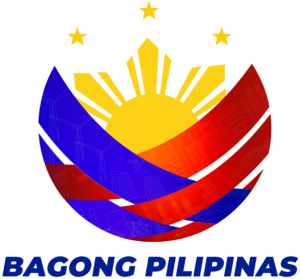OUR FOUNDING MOTHERS: LEST WE FORGET
By: Quennie Ann J. Palafox
A popular saying goes “Behind every man’s success, is a woman”. As far as history is concerned, women have played important roles not only in support of their husbands or in nurturing their child but in nation-building as well. From pre-Hispanic times to the present, women have occupied a vital part in the development of their community and the emergence of Filipino nationalism. The Philippine Revolution was the work of both Filipino men and women, thus, women also are worth mentioning along with men each time we give tribute to the patriotism and sacrifices of our heroes.
In the past, we have often attributed the attainment of our independence as the handwork of men like Jose Rizal, Andres Bonifacio, Emilio Aguinaldo, and other great heroes. Lest we forget, these men would not be successful in their aspirations without the support of their wives and family members. History does not give justice to the women who dedicated their lives to our country as we are more focused on exalting male heroes.
There were women whose prowess in combat was admired including Teresa Magbanua, Trinidad Tecson and Agueda Kahabagan. The Ilongga Teresa Magbanua or Nay Isa earned the title “Visayan Joan of Arc”, for leading the revolutionary armies in the battle in Barrio Yating, Pilar, Capiz. The Bulakeña Trinidad Tecson, dubbed as the “Mother of Biyak-na-bato”, was initiated in the women’s chapter of the Katipunan and became famous in the battlefield. Patrocinio Gamboa known as the “Heroine of Jaro”, became one of the revolutionary leaders in Iloilo and even served as intelligence worker during the hostilities against the Spaniards. Agueda Kahabagan or Henerala Agueda, was the only woman general of the Army of the Filipino Republic. She was a fierce combatant fighting side by side with men in the battlefields in Laguna.
Nevertheless, there are still unsung heroines of Philippine revolution, who should be given due credits. Women such as Marcela Marcelo or Selang Bagsik of Malibay (now part of Pasay City) who died in the Battle of Pasong Santol in Imus in 1897; Valeriana Elises who accompanied her husband Gen. Pantaleon Garcia in his battles in Cavite, and Gregoria Montoya, who avenged the death of her husband and died bravely in the combat zone.
But Filipino women’s participation during the Revolution was not confined solely to hand-to-hand combat. Melchora Aquino, known as Tandang Sora, accordingly was the oldest heroine who at participated in the Revolution. She became a legend risking her life feeding and sheltering revolutionists and giving medicines to the wounded soldiers. For this, she was deported to Guam in 1896. Similarly, there were women who, scions of rich families, voluntarily donated their money to finance the Revolution. Some of them were Matea Rodriguez of Pampaga and Rosario Lopez of Negros. There were also wives who rallied behind their husbands and supported them in their fight for freedom namely Salome Siapoco, wife of Gen. Mariano Llanera and Agueda Esteban, wife of Col. Mariano Barroga. Another hardly known heroine was Rosario Villaruel, the first Filipino woman mason, who was arrested with other Ilustrados suspected of engaging in Masonic activities which were then considered anti-friar.
The Filipino Red Cross served as another venue for women’s participation in the Revolution by treating the wounded soldiers as well as collecting donations of food and clothing for the revolutionaries and their families. Hilaria del Rosario, the first wife of Gen. Emilio Aguinaldo was the organizer and president of the Filipino Red Cross Society. Other Red Cross volunteers were Praxedes Fajardo, Adriana Sangalang Hilario of Pampanga and Nazaria Lagos, who earned the title “Florence Nightingale of Panay”.
In July 1893, a year after the foundation of the Katipunan, the women’s chapter of the Katipunan was formed in July 1893. Women who joined the Katipunan were limited to the wives, daughters, or close relatives of the Katipuneros. Among the women initiated were Marina Dizon (cousin of Emilio Jacinto), Josefa Rizal (sister of Jose Rizal), Angelica Lopez and Delfina Herbosa (Rizal’s nieces), and Gregoria de Jesus (Bonifacio’s wife).
Gregoria De Jesus, the Lakambini of Katipunan, had to endure many sufferings and even faced many dangers while accompanying the soldiers in the battle in the outbreak of the revolution. Rizal’s sister, Josefa Rizal, who was elected president of the Women’s chapter of Katipunan, also joined in masonry, which espoused liberalism, through the Logia de Adopcion where she used the name “Sumikat.” Another sister of Rizal, Trinidad, was also active in the Masonic lodge and along with Josephine Bracken and Paciano, she was active in the revolution in Cavite. Marina Dizon from Binondo presided over
initiation rites for women, kept the records, and provided orientation for the new members about the constitution and teachings of the Katipunan.
We owe our national flag that was unfurled during the declaration of Philippine Independence in Kawit, Cavite on June 12, 1898 to a woman by the name of Marcela Agoncillo, best known as the “maker of the Philippine flag”. She was assisted in this project by her daughter Lorenza and Delfina Herbosa, Rizal’s niece and wife of General Jose Salvador Natividad.
As we celebrate the 113th year of Philippine Independence, let us also commemorate and pay due respect to the sacrifices of our founding mothers for the cause of the country’s freedom. History has shown the Filipino women to be tenacious and to have strong will power. Although there were many obstacles in their path their sheer determination enabled them to achieve their longing for freedom and driving them to go on fighting, not only for themselves or their families, but also for their beloved country. The National Historical Commission of the Philippines has honored some of these eminent Filipinas posthumously, by installing a historical marker reminding every Filipino about their heroism and nationalism.

